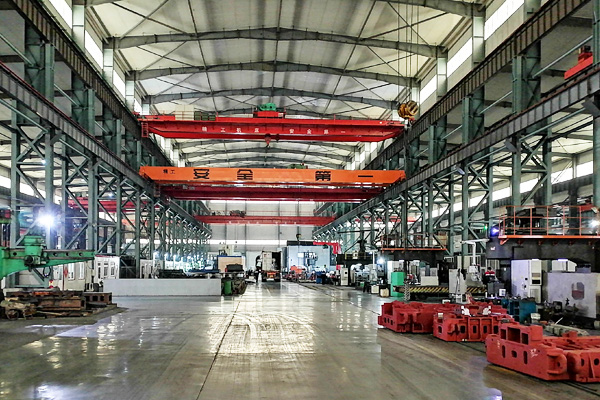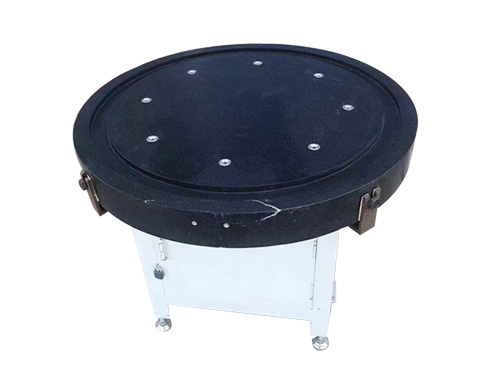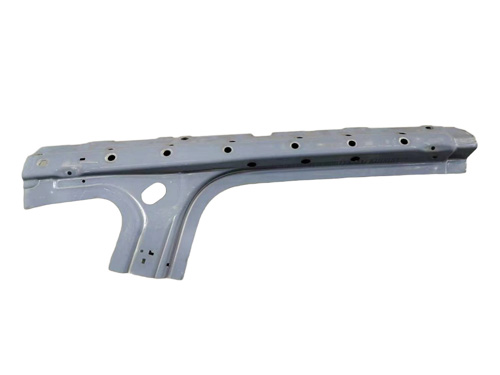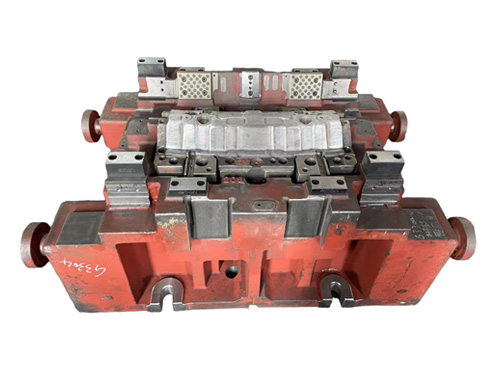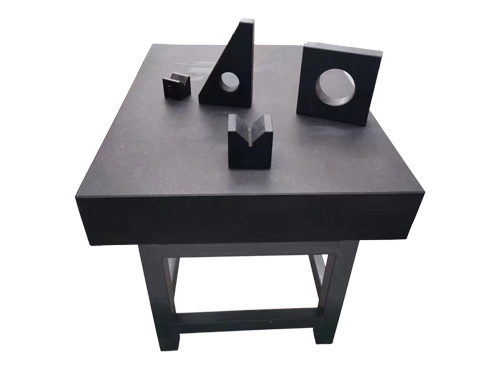News Detail
Comprehensive Analysis of After-Sales Services for Cast Iron Platforms: Maintenance, Repair, and Technical Support
author:hxrtools Time:2025-06-05 18:01:10 Click:127
In the field of mechanical processing, cast iron platforms serve as crucial foundational equipment. The stable performance of these platforms directly impacts production efficiency and product quality. High-quality after-sales services are the key to ensuring the continuous and efficient operation of cast iron platforms. From routine maintenance to troubleshooting repairs and professional technical support, a comprehensive after-sales system can effectively extend the platform's service life and reduce operating costs.
I. Introduction: The Importance of After-Sales Services for Cast Iron Platforms
1.1 Issues Faced During Equipment Use
During prolonged use, cast iron platforms may experience wear, deformation, and reduced accuracy due to factors such as heavy loads, processing vibrations, and environmental conditions. If not addressed promptly, these issues can not only affect the normal use of the platform but also lead to increased processing errors, frequent equipment failures, and disruptions to the entire production process.
1.2 Core Value of After-Sales Services
High-quality after-sales services can promptly resolve various problems encountered during platform use. Professional repairs restore platform performance, scientific maintenance extends its service life, and comprehensive technical support provides users with usage guidance. This not only reduces a company's equipment maintenance costs but also ensures production continuity and stability, enhancing the company's overall competitiveness.
1.3 Focus of This Article: Analyzing Key Aspects of After-Sales Services
This article focuses on the repair, maintenance, and technical support aspects of after-sales services for cast iron platforms. It provides a detailed analysis of the operational processes, key points, and precautions for each aspect, helping users understand how to obtain efficient and reliable after-sales support.
II. Recap of Basic Knowledge About Cast Iron Platforms
2.1 Equipment Definition and Functional Overview
Cast iron platforms are planar reference devices primarily made of cast iron, fabricated through casting and machining processes. They are mainly used for workpiece measurement, marking, and assembly operations, providing a stable reference plane for mechanical processing.
2.2 Core Composition and Characteristics
Cast Iron Material Characteristics: The graphite structure within cast iron imparts good shock absorption and wear resistance to the platform. However, attention must be paid to rust prevention and impact resistance, as these characteristics influence the platform's maintenance and repair priorities.
Platform Structural Design: Reasonable rib layout and box structure determine the platform's load-bearing capacity and stability. During maintenance and repair, the integrity of the structure must be considered.
2.3 Key Technical Parameters and Their Relevance to After-Sales Services
Flatness: Flatness is an important indicator of platform accuracy. When accuracy declines, repairs and maintenance are required to restore it.
Load-Bearing Capacity: Load-bearing capacity affects the platform's usage specifications. Technical support can guide users in proper usage to avoid platform damage caused by overloading.
Hardness: Changes in hardness affect the platform's wear resistance. Repair methods must be selected based on the hardness condition.
III. In-Depth Analysis of Repair Services for Cast Iron Platforms
3.1 Common Fault Types
Working Surface Wear: Long-term use or workpiece friction can cause scratches and dents on the working surface, affecting measurement and processing accuracy.
Frame Deformation: Under heavy loads or external impacts, the platform frame may bend or twist, compromising platform stability.
Accuracy Degradation: Factors such as temperature changes and vibrations can cause a decline in the platform's flatness, parallelism, and other accuracy indicators.
3.2 Repair Process and Methods
Fault Diagnosis: Professional repair technicians use measuring tools and detection equipment to conduct comprehensive inspections of the platform, accurately identifying fault types and causes.
Repair Operations: For working surface wear, techniques such as grinding and scraping are employed for restoration. For frame deformation, methods like straightening and welding are used to restore the structure. When accuracy declines, high-precision instruments are utilized for calibration and adjustment.
Quality Inspection: After repairs, the platform's various technical parameters are retested to ensure that the repaired platform meets standard performance requirements.
3.3 Key Points for Selecting Repair Services
Choose a Professional Repair Team: Prioritize repair teams with extensive experience, professional equipment, and relevant qualifications to ensure repair quality and efficiency.
Consider Repair Cycle Time: Understand the time required for repairs and opt for services that can respond quickly and shorten the repair cycle to minimize production disruptions.
Clarify Repair Warranty: Confirm the warranty period and scope of the repair service to ensure that any issues with the repaired platform within a certain timeframe can be addressed free of charge.
IV. Detailed Explanation of Maintenance Services for Cast Iron Platforms
4.1 Daily Maintenance Tasks
Cleaning and Maintenance: After each use, promptly clean the platform surface of iron filings, oil stains, dust, and other debris to prevent impurities from entering T-slots and bolt holes, which could affect normal platform use.
Rust Prevention: Regularly apply anti-rust grease or paint to the platform surface, frame, and bolts to form a protective film and prevent cast iron from rusting and corroding.
Inspection and Tightening: Regularly inspect the platform frame's welded joints for cracks or weld separation, and check for loose bolts. Tighten any loose components promptly to ensure platform structural stability.
4.2 Regular Maintenance Plan
Quarterly Maintenance: Conduct a comprehensive inspection of the platform every quarter, including flatness testing and load-bearing capacity assessments, to promptly identify and address potential issues.
Annual Maintenance: Perform in-depth maintenance on the platform annually, such as regrinding the working surface and recalibrating the frame structure, to restore platform accuracy and performance.
4.3 Importance of Maintenance Services
Scientific maintenance can effectively prevent platform failures, reduce the frequency and cost of repairs, extend the platform's service life, and maintain its high-precision state, ensuring smooth production operations.
V. Technical Support Services for Cast Iron Platforms
5.1 Selection and Installation Guidance
Selection Support: Provide professional platform selection advice based on factors such as the user's processing requirements and budget, helping users choose cast iron platforms with appropriate accuracy levels, sizes, and load-bearing capacities.
Installation Guidance: Offer detailed installation plans and on-site guidance to ensure that the platform is installed in a dry, level, and vibration-free environment, with proper level calibration.
5.2 Usage and Operation Training
Basic Operation Training: Provide basic training on platform usage for user operators, including workpiece clamping and measuring tool usage, to ensure that operators use the platform correctly and avoid damage due to improper operation.
Advanced Skill Training: For high-precision processing needs, offer advanced skill training, such as platform accuracy calibration and complex workpiece positioning, to enhance operators' proficiency.
5.3 Technical Consultation and Fault Troubleshooting
Technical Consultation: Provide technical consulting services to answer users' questions about platform usage, maintenance, and repairs, helping users better manage and maintain the platform.
Fault Troubleshooting Guidance: When the platform experiences a fault, assist users in fault troubleshooting through remote or on-site guidance, providing preliminary solutions to shorten fault resolution time.
Conclusion: The Long-Term Significance and Outlook of After-Sales Services for Cast Iron Platforms
As an indispensable foundational device in the mechanical processing field, the level of after-sales services for cast iron platforms directly impacts a company's production efficiency, quality, and costs. Through this in-depth analysis of the three core aspects of repair, maintenance, and technical support, it is clear that professional repair services can accurately address platform faults and restore their performance; scientific maintenance plans can effectively prevent potential issues and extend the platform's service life; and comprehensive technical support provides solid assurance throughout the entire process of selection, installation, usage, and fault troubleshooting.
 HOT PRODUCTS
HOT PRODUCTS
 CONTACT US
CONTACT US
—— E-mail:project@haoranmj.com
—— Whatsapp:+86 18932785670
—— Tel:+86 18932785670
—— Add:Across from Sanjing Distillery on Road 4, Botou Economic Development Zone, Cangzhou City, Hebei Province









